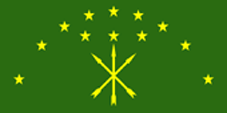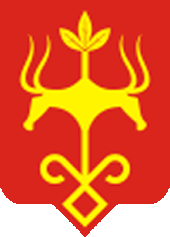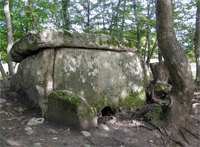|
In the
mountainous parts of Adygea, a series of peaks-Shepsi, Oshten,
Fisht, Chugush, and Pseashkho stretches from south to east. The
navigable Kuban River is one of the largest rivers in the
Caucasus. The Belaya, Laba, Pshish, Psekups, Kisha, Dakh, Cakhrai,
Khodz, Fars, and many other rivers have their sources among the
glaciers and permanent snowfields.
Climate: Moderately warm with average January temperature: -2°C;
average July temperature is +22°C.
Transportation: There is a small airport in Maykop (ICAO airport
code URKM). Several rail lines pass through the republic. The
river Kuban is navigable. The nearest seaport is in Tuapse (150 km
from Maikop). Public transportation in Maikop consists of city
buses, trolleybuses and marshrutkas.

Sightseeing:
The Kuban, Laba, Belaya, and Adygea rivers are historical sites
steeped in legends, where the celebrated Great Silk Route to Asia
passed in the Middle Ages. The ancestors of the Adyge created the
Maikop culture, well known in world archaeology.
Maykop was founded in 1857 as a Russian Kuban Cossack fortress. It
served as an important strategic outpost during the finale of the
Caucasian War in 18581863. It was granted town status in 1870.
City Day: First Saturday of June.
At the Pushkin State Drama Theater, productions are staged in both
official languages, i.e., Adygean and Russian. The Nalmes State
Academic Adygean Folk Dance Ensemble and the Islamei State Adygean
Folk Song Ensemble are examples of successful professional groups.
New professional groups have also been formed, for example, the
symphony orchestra of the Adygean Ministry of Culture, the
Russkaya Udal State orchestra of Russian folk instruments, a
choral ensemble, and the Oshten show ensemble, which popularizes
the finest accomplishments of Russian popular culture.

There are 8 state and 23 public museums in the republic. The
largest museum is the National Museum of the Republic of Adygea in
Maykop. It possesses unique archaeological, ethnographic, and
natural collections. A special section on the Adyge diaspora has
been opened, resulting in a significant addition to the Museum`s
exhibits on the period of the Caucasian War and the life of Adyge
abroad. A branch of the State Museum of Eastern Peoples and a
picture gallery have been opened in Maikop.
Burial mound Oshad of Scythian-sarmat period (the treasures from
which are kept in the Hermitage) with a monument.

Ancient fort of Maykop.
Pushkin`s bust.
Monument Friendship (1557-1957), devoted to the 400th
anniversary of Russia and Adygea unity.
Railway station, built in 1910, Maykop.
Officers` House, 1907, Maykop.
Saint Trinity Church (XIX с.)
Svyato-voskresenskaya Church (built in 1833)
Armenian Church (built in 1912)
Hydropathic establishment (built in 1908)
Roman-Catholic Church (built in 1914)
Gorky Park (laid in 1866)
Memorial to the heroes of the Civil and Great Patriotic Wars
Theatres:
Adygea Drama Theatre (Maykop)
Russian Pushkin Theatre (Maykop)
Puppet theatre Chocolate (Maykop)
The republic is in an area of mixed tourism and has considerable
resources for hunters.
Several conservation areas have been created in Adygea, including
the Caucasus State Biosphere Preserve spread over Adygea and
Krasnodar and Stavropol territories, a number of unique natural
monuments, and Gornaya Adygea National Park. Mountain hiking
trails and a riding trail are also very popular.
The area where the Caucasian dolmens are found is the ancestral
home of the Adyge-Abkhaz tribes. Today, there are five dolmen
fields in the republic with about 200 whole and partly ruined
dolmens. |